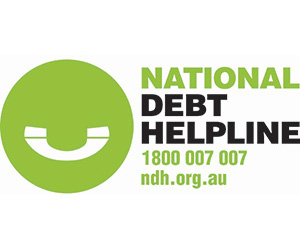Top tip for young people with mental health challenges
Leila Heinrich is a Senior Peer Support Worker at headspace. She shares her story of using mental health services, what peer support workers do, how headspace works, and her top tip for young people having challenges.
This is the transcription of the her interview as part of ABC Gives broadcast from headspace Katherine on 29 November 2023.
“When I was going through mental health services, I came across peer workers as a new field in the mental health system. I was volunteering as part of the Youth Advisory Group at headspace which is a volunteer group to keep headspace youth friendly. An opportunity came up to do peer support work, I had lived experience of accessing services and ended up going for the job.
Talk without having to fix it
The joke is – the hardest part about being a peer support worker is explaining what peer support is. In a nutshell it’s somebody who has experienced mental health challenges and accessing mental health services, who has been trained to use those experiences to support people coming through services now. Part of it is providing a space for people to talk about what is going on without having to fix it or worrying about any judgement. We are also a guide through services sometimes, because people don’t know what to expect.
Sometimes people need space to talk about it without feeling like they’re being a burden or feeling like they’re taking up too much space. Peer support can be a good middle ground, we can’t be what family and friends are, but sometimes not having that personal baggage can make it a lot easier to talk about it. At the same time, there isn’t that stress to fix things or get through things quickly like there is with clinicians.
Seeing growth is why I work at headspace
When a young person comes into headspace they normally go through what we call the ‘first step’ which is seeing a clinician to see what’s going on for them, and what kind of support they need. Often one of those options is peer support, and so if they come through to my team, it is really about creating a space that feels safe for them. Providing a space to talk or answer questions. It might be talking about what to expect from the clinicians, or to get a tour of the space so they feel more comfortable.
Recently I had someone who I’ve been working with for quite a while completely changed from when she first came to the service. She is so much more confident, she’s kicking goals, getting into work, things that when I first met her, she never would have thought would be possible. Being able to see that growth is why I work at headspace.
Learning confidence to get through it
Also having conversations with people knowing they probably wouldn’t have had that conversation before, and being able to talk about what is troubling them, while having the confidence to get through it because other people have too.
The knowledge that somebody else has been through it too, and to acknowledge that it’s ok to feel the way you do. From my own experience I know the brain lies and tells you that you’re the only one who has ever gone through this. Or that you’re not bad enough to seek help. Being able to have those talks with someone who has gone through it helps young people to feel heard and listened to and to find the confidence to do the work they need to do to look after their mental health.
Top tip for people I work with
One thing I always say to people I work with is don’t wait until things get really bad. Often we tell ourselves that it’s not bad enough or that someone else has it worse, but if it’s starting to affect you and it’s starting to not feel right, it is never too early to reach out for support”.

